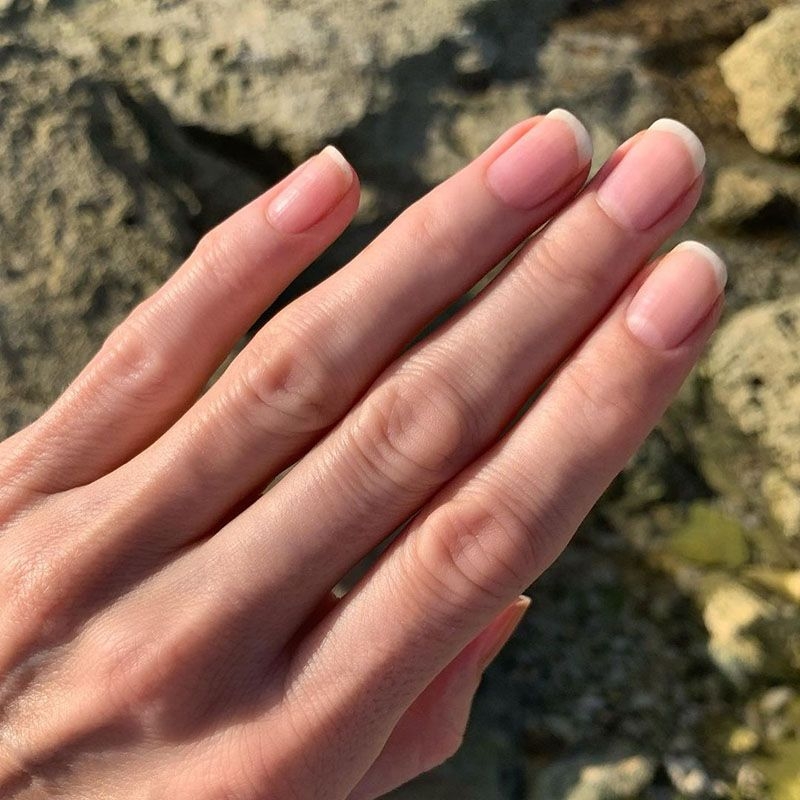
Image: @tati_vk
For many of us lockdown and quarantine have become a time to reassess our habitual routines. We have gained a fresh perspective on shopping and fashion industry as a whole, with local manufacturers coming into the spotlight. With limited access to beauty salons, we have also gained a new outlook on such beauty treatments as manicures.
Without the access to long wear polishes and salon quality tools , it has become evident that beautiful nails are essentially healthy ones. Meanwhile, some of the techniques like E-file and multi-layered gel manicures are detrimental to nail growth and strength.
Here we will aim to address some of the most burning questions regarding nail care at home. Why purchasing a home nail kit with UV lights is not such a good idea? How to restore your nail plates after years of abrasive nail polish removers and lacquers? What natural products are best for nail care?
Three of the most common reasons for brittle and thinning nails are vitamin and micronutrient deficiency, dehydration, and long wearing polish. To maintain good standards of nail health, it is recommended to consume sufficient amounts of calcium, chrome, zinc and biotin (vitamin B7). The latter can be found in abundance in foods like beef and pork liver as well as egg yolk, which explains the possible deficit of this vitamin among vegetarians and vegans.
Poor nail health can also be an indicator of general dehydration. But this can be easily solved by increasing your water consumption and taking more foods with high water content such as cucumbers, celery and watermelons.
But, more often than not, the reason for brittle nails is excessive use of high-tech manicure treatments and long wearing coats. Everything associated with these is questionable, from the gel polish itself, which contains toxic allergens and cancerogenic ingredients, to the UV light required for drying. Despite short-term use, scientists are concerned over its frequent application in manicures. UV-rays are considered mutagenic and are associated with an increased risk of skin cancer. On top of that, removal of such gel polishes required acetone-based products, which typically lead to nail plate thinning.
The thin film of skin at the base of our nails is there for a reason. It provides an essential protective barrier, preventing the penetration of bacteria, infection and fungus.
It is best to prioritise mechanical rather than electrical manicure appliances for this very reason. This involves moving the cuticle closer to the nail base with a special orange stick. To soften the skin around your nails and prevent burrs, make sure to regularly moisturise with oil.
Nail length is not just a personal preference but also a matter of hygiene. Unfortunately, long nails are a draw for bacteria, even after washing your hands thoroughly with soap. The most reasonable solution is to keep them short or medium in length using nail clippers or a glass nail file.
Unlike their plastic or metal counterparts, glass files are more hygienic, long-lasting, and simply take good care of your nails. Make sure to file your nails in the same direction, from the edge towards the centre to avoid splitting.
The idea of letting your nails breathe is nothing more than an old wives’ tale. Nails obtain sufficient oxygen from the blood. However, giving your nails a break, with an occasional polish free period, is beneficial, especially if you are a frequent user of long wearing coats.
More damaging than the polish itself is the regular use of acetone removal products, filing of the coat and polishing. All of this increases nail sensitivity and leads to the loss of moisture in the cuticles. The safest solution would be to use natural coats and products containing moisturising ingredients. Even then, nails would require some time to restore, which would happen significantly faster if they are left to their own devices.